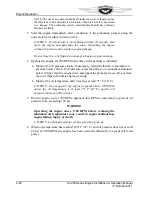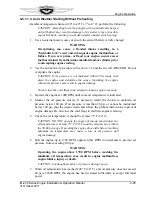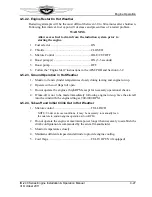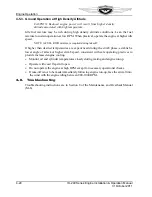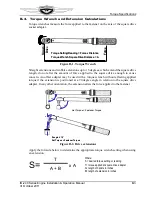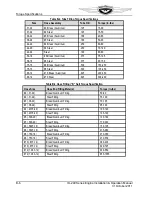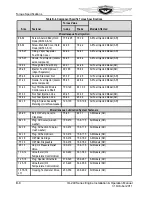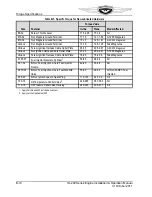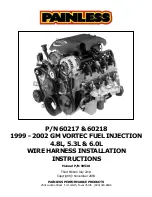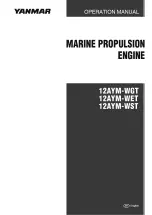
IO-240 Series Engine Installation & Operation Manual
B-1
31 October 2011
Torque Specifications
Appendix B.Torque Specifications
B-1. General Information
Tables in this appendix list torque values for Continental Motors aircraft engine hardware.
Refer to the appropriate manufacturer’s overhaul instructions for airframe or engine
accessory torque specifications. Table B-1 is for bolts, nuts, screws, driving studs, and
pipe plugs; Table B-2 is for fittings, Table B-3 is for hose fittings, and Table B-4 lists
specific component torque values. Torque values provided in Table B-5 must be used for
the listed applications.
WARNING
Torque values listed are for use with clean 50-weight aviation
engine oil applied to the threads, unless otherwise specified in
Table B-5, which lists specific torque values for non-lubricated
hardware.
Prior to torquing any hardware, unless otherwise specified, apply SAE 50 weight aviation
oil to hardware listed in Table B-1 through Table B-4. If an application is not listed in the
specific torque limits tables (Table B-4 and Table B-5), use the general torque limits in
Table B-1 through Table B-3.
WARNING
Before installing nuts and bolts, verify the fastening hardware
is lubricated according to instructions. Inspect all fasteners for
proper plating and thread form. Failure to verify a fastener’s
serviceability or to correctly lubricate the fastener prior to
installation will result in the fastener not being properly pre-
loaded. Subsequent failure of the fastener may occur.
B-1.1. Torque Tips
WARNING
The use of sealants or lubricants other than those specified by
Continental Motors on mating threads and between mating
surfaces can cause incorrect torque application and subsequent
engine damage or failure.
•
Check Table B-4 and Table B-5 first to determine if the hardware to be torqued
requires a specific torque or treatment other than those for general hardware sizes
listed in Table B-1 through Table B-3.
•
Before torquing the hardware, verify the hardware size is correct.
•
The accuracy of any torque indicating wrench depends on a smooth application of
force and current calibration traceable to the National Institute of Standards.
•
If cotter pin holes must be aligned, set the torque wrench at the low limit and tighten
the nut to the first hole beyond this torque, but do not exceed the maximum specified
torque limit. This torquing procedure must be followed for all applications requiring
cotter pin hole alignment except for connecting rod nuts.
Содержание IO-240-A
Страница 145: ......
Страница 146: ...www continentalmotors aero ...






